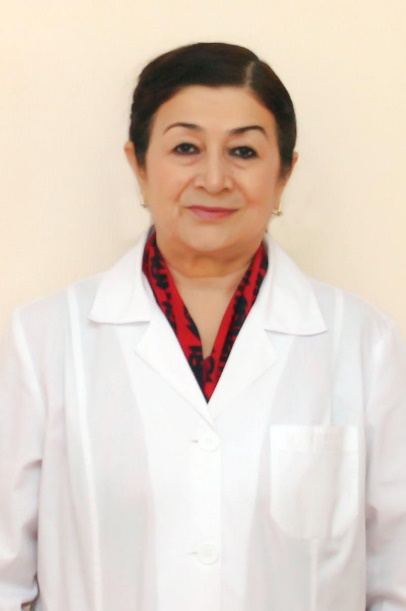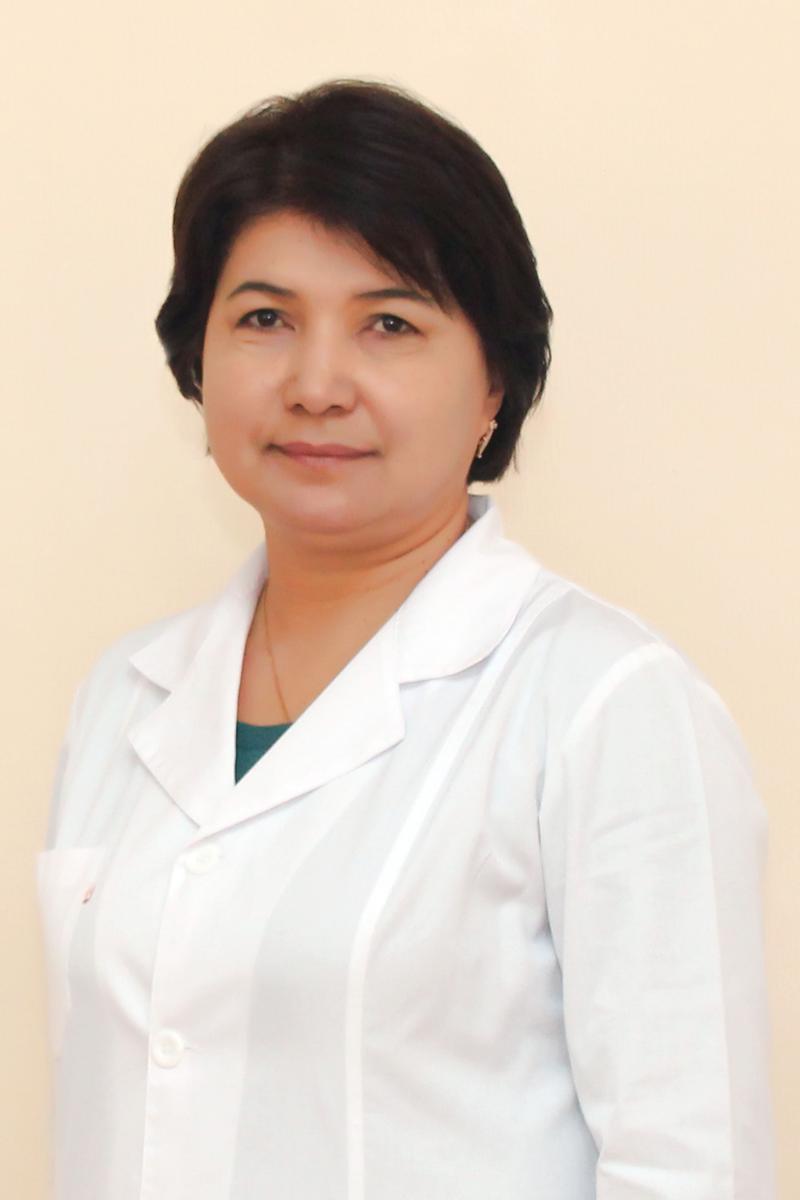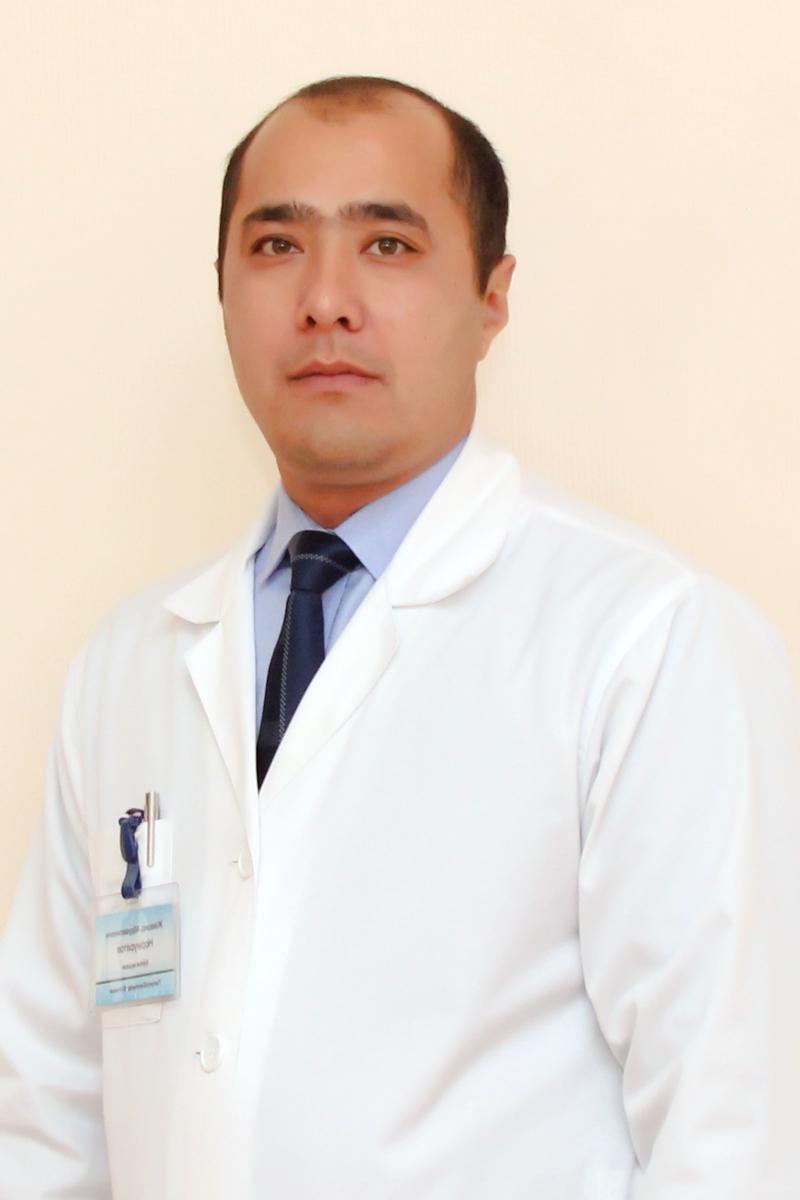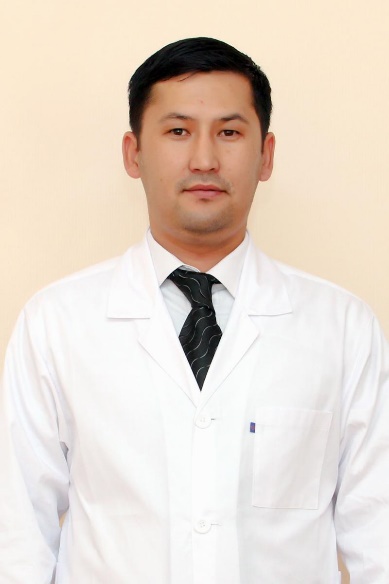The Department of Hepatology, you can pass a highly accurate diagnosis and treatment of major diseases of the liver, gallbladder and bile ducts within the same clinic, in a comfortable environment at a convenient time.
Particular attention is paid to the treatment of chronic viral hepatitis B and C, autoimmune hepatitis, cirrhosis of any severity.
Laboratory and instrumental diagnostics are carried out on the newest equipment and modern laboratories of their own research departments of the hospital. This makes it possible to identify the disease at an early stage of development, which is particularly important given the long latency for many diseases of the liver, irreversibly destroying the liver tissue. Early examination allows you to assign an effective treatment to prevent disease progression, avoid serious complications, to maintain quality of life.
Facilities of the hospital, high professional level of our doctors are doing long-term specialization of our department of hepatology one of the most sought-after in Tashkent. High accuracy of diagnosis and effectiveness of treatment attracted us patients from across the country and from abroad. Individual approach to the compilation of regimens also helps in the healing of patients.
Areas of work
Department of Hepatology:
- diagnosis and treatment of diseases of the liver, gallbladder and biliary tract (GVP) - fatty liver disease, various types of hepatitis, liver cirrhosis, toxic liver damage, cancer, hepato-biliary system, liver failure, cholecystitis, dyskinesia ZHVP, cholelithiasis, etc. .;
- specializes in the treatment of chronic viral hepatitis B and C, autoimmune hepatitis, cirrhosis of the liver;
- helps patients with cirrhosis of the liver to maintain the state compensation.
Innovative techniques
In our work, our doctors use the most modern methods of diagnosis and treatment of diseases of the liver and gall bladder.
- Ultrasound examinations of the abdominal cavity can detect acute and chronic diseases studied organs, to determine the most secure path for puncture tissue.
- If necessary the fibroelastografiya. This is a modern revolutionary technique in ultrasound diagnostics, which allows high accuracy to identify liver fibrosis at an early stage and to evaluate his level.
- Liver biopsy allows for in-depth study of tissues, differentiated diagnosis.
- Held a full range of laboratory tests on the basis of modern diagnostic laboratory.
- Endoscopy - gastroscopy and colonoscopy - are conducted at the request of a patient in a state of sedation.
- We follow all world trends and use the most effective and safe treatment regimen liver disease, gall bladder and bile ducts, based solely on the principles of evidence-based medicine.
- In addition to drug therapy, our experts will develop a balanced diet for you.
For the treatment of liver diseases, especially autoimmune hepatitis, we apply hemocorrection - an innovative method of cleansing the blood outside the patient's body. Krioferez and cascade plasma filtering allows you to remove from the blood of autoimmune antibodies that trigger the development of diseases.
Ultrasound Scanner Accuvix A30 (Samsung Medison, Korea)
It is used in gastroenterology, hepatology and in all other areas of medicine. Accurate and realistic 2D- and 3D-visualization. Suitable for dopplerographic vascular studies, triplex scanning vessels hepatopancreatoduodenal area to clarify the pathology of the liver and pancreas.
HI VISION Preirus (Hitachi, Japan)
Diagnosis of the abdominal cavity, inflammatory processes, tumors, including early. Use of broadband beamforming technology, ultra-fast image processing. calculation algorithm to determine the degree of elasticity of the tissue, which is important for assessing the state of the organism. Possibility of endoUZI to clarify the status of the pancreas, determine the extent of the defeat of the digestive tract wall with space-occupying lesions.
Modern endoscopic system based on the video EPK-i7000 (PENTAX Medical, Japan)
Carrying gastroscopy and colonoscopy. It identifies changes in the mucous at the earliest stage. The ability to obtain an image in monochrome, increase physician interesting areas of mucous. Also during the survey can be biopsied tissue.
Our specialists
At hepatology department reception are doctors who specialize in the diagnosis and treatment of liver diseases, including viral hepatitis and cirrhosis of any severity. We do our best to help patients recover and maintain a stable state of injury.
Office works closely with the Department of Internal Medicine with endocrinology for the preparation of general practitioners, TMA. Detours in the department head of the department conducts, MD Professor A.A.Hamraev. The Department of work dms M.T.Rustamova professor, Ph.D. S.I.Sadikova Associate Professor, Ph.D. M.H.Tagaeva Associate Professor, Ph.D.
The staffing department deployed 35 beds. Obtained single and double chamber Superior.
The list of diseases
- cholecystitis
- hepatitis of different etiology
- liver cirrhosis of different etiology.
Cholecystitis - inflammation of the gallbladder - one of the most frequent complications of gallstone disease. Basic principles for the development of inflammation in the gallbladder wall: the presence of microflora in the lumen of the bladder and the violation of the outflow of bile.
A leading factor in the development of acute cholecystitis is a violation of the outflow of bile from the gallbladder that occurs when occlusion stone neck of the gallbladder or cystic duct. Of secondary importance in the development of acute inflammation has circulatory disorders of the gallbladder wall in atherosclerosis visceral branches of the abdominal aorta and the damaging effect of pancreatic juice to the mucosa of the gallbladder at the reflux of pancreatic juice into the bile ducts.
Chronic cholecystitis can be acalculous and calculous, from the Latin word «calculus», which means "stone". Calculous cholecystitis is one of the results of cholelithiasis.
Chronic cholecystitis is manifested by nausea, dull pain in the right upper quadrant and other unpleasant sensations that occur after a meal. In the diagnosis of cholecystitis are important research data and cholecystocholangiography.
The most severe complication of calculous cholecystitis is hepatic colic. If the bile duct enters medium-sized (less than 1 cm) stone, prevents normal outflow of bile in the blood to bile pigments and develops podpechёnochnaya jaundice.
Colic symptoms are very similar to the beginning of acute cholecystitis. However, pain in hepatic colic is more pronounced and occurs usually at night or early morning.
After some time, manifested symptoms of jaundice: occurs yellowing of the skin and sclera - there is a kind of lemon-yellow, urine darkens and becomes like a beer, and feces noticeably lighter, until the whites.
Patients in this condition subject to emergency hospitalization.
Chronic cholecystitis may be consequence of an acute, but can also occur independently. In the Russian medical literature to highlight the typical and atypical appearance of symptoms of gallbladder disease (cholelithiasis-K 80.2 and chronic cholecystitis).
The presence of gallstones significantly complicates the task of treatment and worsens the prognosis of disease.
Pancreatitis - a group of diseases and syndromes in which there is an inflammation of the pancreas. When inflammation of the pancreas enzymes secreted gland is not released into the duodenum, and are activated in the gland itself and begin to destroy it (self-digestion).
Classification
- acute pancreatitis
- acute recurrent pancreatitis
- chronic pancreatitis
- exacerbation of chronic pancreatitis.
Etiology
According to current statistics:
- 50% of patients with pancreatitis or pancreatic necrosis - a person who abuse alcohol,
- 20% are persons who developed pancreatitis as a complication of gallstone disease.
- As causes of pancreatitis are:
- poisoning
- injury
- viral diseases
- infectious diseases, including Helicobacter pylori
- fungal
- parasitic diseases: Opisthorchiasis, trematodozov and others.
- sphincter of Oddi dysfunction.
- complications after surgery and endoscopic manipulation (statistically about 5%).
- Congenital pancreatitis.
Clinical manifestations
Clinical manifestations of acute and chronic pancreatitis are different. Often after suffering acute pancreatitis formed psevdokistypodzheludochnoy gland, which refers to chronic pancreatitis. Against the background of chronic pancreatitis may cause acute pancreatitis, which is not equivalent to the exacerbation of chronic pancreatitis.
Typical symptoms of acute pancreatitis: severe epigastric pain, pain, sudden, severe, constant in the upper abdomen. Irradiation in the left half of the body. Vomiting - indomitable, with bile and not bringing relief.
By increasing the head of the pancreas - can jaundice (violation of the outflow of bile, leading to accumulation of bile pigments in the blood and tissues of the body), accompanied by yellowing of the skin, color of urine in a dark color and lighting feces.
Hepatitis - general name of acute and chronic diffuse (i.e., in contrast to the focal propagating the whole body), inflammatory liver diseases of various etiology.
The etiology of hepatitis
- Infection (viral) hepatitis:
- Hepatitis A
- Hepatitis B
- Hepatitis C
- Hepatitis D
- Hepatitis E
- Hepatitis F
- Hepatitis G
- Hepatitis as a component of: yellow fever, cytomegalovirus, rubella, mumps virus infection Epstein - Barr, a variety of herpes infections, Lassa fever, AIDS.
- Bacterial hepatitis: at leptospirosis, syphilis.
- Toxic hepatitis:
- Alcoholic hepatitis
- drug-induced hepatitis
- Hepatitis cases of poisoning by various chemicals
- Radiation hepatitis (a component of radiation sickness)
- Hepatitis as a consequence of autoimmune diseases
Symptoms of hepatitis
Jaundice - best known symptom occurs when bilirubin is not processed in the liver into the blood stream and gives the skin a characteristic yellowish tint. However, often there are anicteric forms of hepatitis. Sometimes the beginning of hepatitis Flu-like with fever, headache, malaise, body aches. Typically, this is - the so-called "mask" beginning of viral hepatitis, characterized by weakness.
Pain in the right upper quadrant usually occur due to stretching of the shell of the liver (liver enlargement) or may be associated with the gall bubble and pancreas. Pain may be dull and long, aching, and paroxysmal, intense, can give the right shoulder and right shoulder blade.
The chronic form
The chronic form may develop independently (for example, in chronic poisoning with ethyl alcohol), or continue the development of acute hepatitis (hepatitis B, D). The clinical picture in chronic hepatitis poor, the disease is asymptomatic for a long time. Characteristically persistent enlarged liver, dull pain in the right upper quadrant, intolerance to fatty foods, and others. In chronic hepatitis B liver cells are gradually replaced by connective tissue, so that in most cases, the treatment of chronic hepatitis B does not lead to cirrhosis of the liver.
Cirrhosis - severe liver disease, accompanied by irreversible parenchymal replacement of liver tissue by fibrous connective tissue, or stroma. Tsirrotichnaya liver is enlarged or reduced in size, unusually thick, bumpy, rough.
Etiology
Often develop cirrhosis after prolonged alcohol intoxication (according to various sources, from 40-50% to 70-80%) and against the background of viral hepatitis B, C and D (30-40%). Rarer causes of cirrhosis - a disease of the biliary tract (intra- and extrahepatic), congestive heart failure, various chemical and drug intoxication. Cirrhosis can develop in hereditary metabolic disorders (hemochromatosis, hepatolenticular degeneration, α1-antitrypsin deficiency), and occlusive processes in the portal vein (fleboportalny cirrhosis). Primary biliary cirrhosis occurs primarily for no apparent reason. Approximately 10-35% of patients the etiology remains unclear.
Symptoms
Most extrahepatic symptoms caused by increased pressure in the sinusoids, which leads to an increase in pressure in the portal hypertension veny.Portalnaya. Also characteristic symptom is the "Head of Medusa" - over-filling veins of the anterior abdominal wall.
Cirrhosis is characterized by common symptoms: weakness, reduced work capacity, abdominal discomfort, dyspepsia, fever, joint pain, are also marked bloating, pain and heaviness in the upper abdomen, weight loss, fatigue. On examination revealed an enlarged liver, compaction and deformation of its surface, edge sharpening. First celebrated even a moderate increase in both lobes of the liver, and later as a rule prevails increase in the left lobe. Portal hypertension is manifested umerennymuvelicheniem spleen.
Unfolded clinical picture seen syndromes of liver cell failure and portal hypertension. There are bloating, poor tolerance of fatty foods and alcohol, nausea, vomiting, diarrhea, feeling of heaviness or pain in the abdomen (mainly in the right upper quadrant). In 70% of cases detected hepatomegaly, liver compacted edge sharpened. In 30% of patients by palpation revealed nodular liver surface. Splenomegaly in 50% of patients.
Low-grade fever may be associated with the passage through the liver, intestinal bacterial pyrogens that it is unable to neutralize. Fever resistant to antibiotics and passes only in improving liver function.
There may be external signs - palmar or plantar erythema, spider veins, scant hair in the armpit and nalobke, white nails, gynecomastia in men due hyperestrogenemia. In some cases, fingers take the form of "clubbing".
In the terminal stage of the disease in 25% of cases there is a decrease in liver size. Also, there are jaundice, ascites, peripheral edema due to fluid overload (especially swelling of the feet), the external venous collaterals (varicose - varicose veins of the esophagus, stomach, intestines). Bleeding from veins often ends in death. Hemorrhoidal bleeding occur less frequently, they are less intense.
Encephalopathy may be due to both hepatic cell and portal-hepatic failure.
Methods of diagnosis
- Ultrasound diagnosis
- endoskopicheskih Research (ezafagoduadenoskopiya, sigmoidoscopy and colonofibroscopy)
- rentgenodiagnostiki
- Modern clinical and biochemical laboratory.
Methods of treatment
Treatment of patients fully comply with international standards.
Associate professors and professors of the department participate in rounds, Council and clinical analyzes of interesting and poorly detected cases, conducting clinical conferences on topical issues of clinical medicine.
Way, procedures and rules of hospitalization.
Concessional patients received an order from his mestozhitelstvo. All other patients are not included in the preferential quota get paid inpatient treatment includes laboratory and instrumental diagnosis, drug therapy, physiotherapy and medical supplies.
SPECIALISTS

Мамлакат Тулабаевна Рустамова
Hepatologist
- тиббиёт фанлари доктори, кафедра профессори

Мавжуда Холматовна Тогаева
Hepatologist
- тиббиёт фанлари номзоди, кафедра доценти

Жамшид Абдувалиевич Нормуродов
Hepatologist
-Бўлим мудири

Хусан Аллаёрович Хайдаров
Hepatologist
- Шифокор